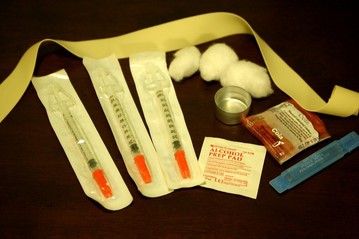|
According to an article in Substance Abuse Treatment, Prevention, and Policy, women and racial/ethnic minorities have a high dropout rate (75%) in opioid use disorder (OUD) treatment in the United States. The gold standard of care in substance use disorder (SUD) treatment is counseling and medication for OUD (MOUD, e.g. methadone, buprenorphine, naltrexone), however, most individuals with OUD receive either counseling or methadone-only services. This study found that clients receiving methadone, the most common and highly effective MOUD in reducing opioid use, were less likely to make progress toward or to complete their treatment plan than those receiving counseling. Women, and in particular those identified as Latinas, were least likely to benefit from methadone-based programs. These findings have implications for health policy and program design that consider the need for comprehensive and culturally responsive services in methadone-based programs to improve outpatient treatment outcomes among women.
 In a brief essay, future doctors who will treat substance use disorders (SUDs) in Indiana have addressed the misinformation and misunderstandings surrounding syringe services programs (SSPs). Their main point is that the rhetoric that SSPs, sometimes also known as needle exchange programs, are enabling drug addiction is simply false. Information in the essay included that SSPs provide access to safe disposal of used injection equipment and connect clients to other important services such as vaccinations, blood-borne illness screenings and treatment, in addition to SUD treatment. The authors also discuss how studies indicate that SSPs decrease drug use and that participants are five times more likely to begin drug treatment programs and 60% more likely to complete treatment than those who began without first participating in an SSP. To read more of the article click here.
This updated report from the Indiana Department of Health’s Drug Overdose Prevention (DOP) team focuses on fatal overdoses, and it is important to note that these data underscore the larger issue of the driver behind the drug and opioid epidemic ― substance use disorder (SUD). Communities are encouraged to recognize SUD as a disease, understand that treatment is available and that recovery from the disease is possible. SUD impacts every county, and to address this problem, the risk and protective factors associated with this disease must be understood. This report was created to disseminate useful and pertinent data to Indiana residents and community leaders to promote dialogue about overdose deaths and SUD disease prevention in their communities to improve the health of all Hoosiers. Read the full report.
Looking for drug overdose data? State and county level data relating to drug overdose deaths, nonfatal overdoses, opioid prescribing and much more can be found on the Drug Overdose Dashboard. Additional overdose data can be found on StatsExplorer. Please feel free to reach out to the DOP team with any data questions.
|